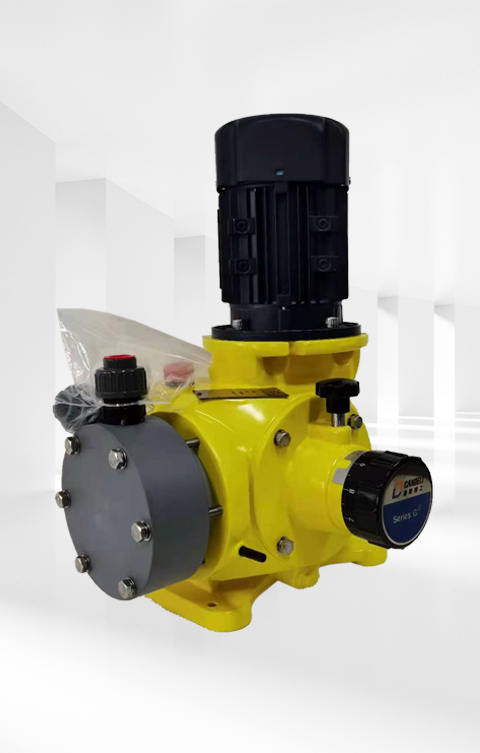Precautions should be taken in the use of metering pump
Metering pump is a member of the reciprocating pump family, which is named as metering pump according to its use. It has the following characteristics: the measurement is very accurate, and the pump itself contains flow regulation equipment, which can complete the endless speed change between the zero flow and the stable point. According to the structure of the hydraulic transmission end, the metering pump can be divided into: plunger pump and diaphragm pump. The metering pump is mainly a double-cylinder single-effect reciprocating pump, and sometimes a number of cylinders are connected together to produce a multi-metering pump, but it has a prominent difference with a multi-steel reciprocating pump.
Because of the uniqueness of various, so its application also needs to pay attention to the following areas:
1. The accumulator should be used effectively
Because the metering pump is a double-cylinder single-effect reciprocating pump, the pulsating drink rate of its flow working pressure is large. In order to better clean the pulsating drink, improve the stability of the flow working pressure, and reduce the level of pipeline oscillation and harm to its process performance, it is generally proposed to install an accumulator at the reciprocating pump outlet to reduce the pulsating drink. Sometimes an accumulator is also installed at the inlet because of the suction characteristics of the suction inlet. The capacity of the accumulator is naturally the larger the better from the perspective of reducing the pulsating beverage level, but the larger the less economic development, so it should be adjusted in the scope. The capacity selection of the metering pump accumulator generally follows: Multiply the measuring working capacity (mL) of each one or four strokes by 26, and the capacity (mL) of the pulse damper required to reduce the pulsating beverage by 90% can be obtained.
2. Flow regulating mechanism
Metering pump flow regulation is completed by the stroke arrangement adjustment mechanism of the pump driving force (naturally, it can also be adjusted according to the frequency converter to complete the adjustment of flow). The travel arrangement adjustment mechanism has two methods of electric adjustment and manual adjustment, the core content of these two forms is consistent, electric adjustment is on the basis of manual adjustment plus a set of electric regulator to replace manual actual operation. At present, the regulating mechanism in our country generally has the following types: N-type shaft mechanism, bow type wheel mechanism, roller mechanism, camshaft mechanism and so on. The application of the flow regulating mechanism will not be limited by starting or shutting down, and it should be jammed after the adjustment to avoid drifting of the mechanism due to vibration and endangering the measurement precision. In general, the larger travel arrangement matches the larger rated flow rate, and the zero travel arrangement matches the zero flow rate, and it is linear transformation correlation.

3. Pneumatic diaphragm pump three valve application
The three valves of the pneumatic diaphragm pump refer to the valve, the exhaust valve and the supplement pump, which are the key components of the hydraulic transmission end of the metering pump. Whether the reasonable application of three valves affects the normal operation of diaphragm metering pump and the accuracy of metrological verification. The valve is used to avoid excessive burden in the pump chamber to protect the safety of the pump and equipment, and the pump manufacturer has already set the jump working pressure of the valve according to the rating of the pump, and generally does not need to adjust it again when in use. The filling pump is used to fill the working material in the hydraulic press chamber, and the exhaust valve can discharge the vapor body in the working material. The application generally needs to be adjusted to prevent too much filling or too much oil when exhaust.



